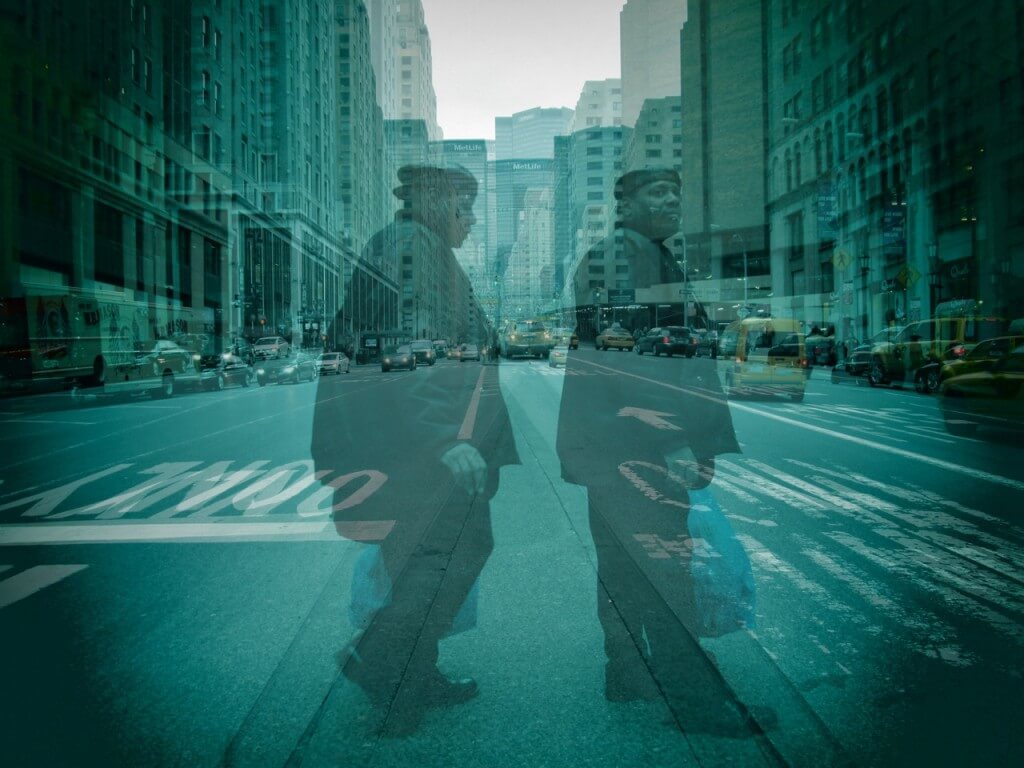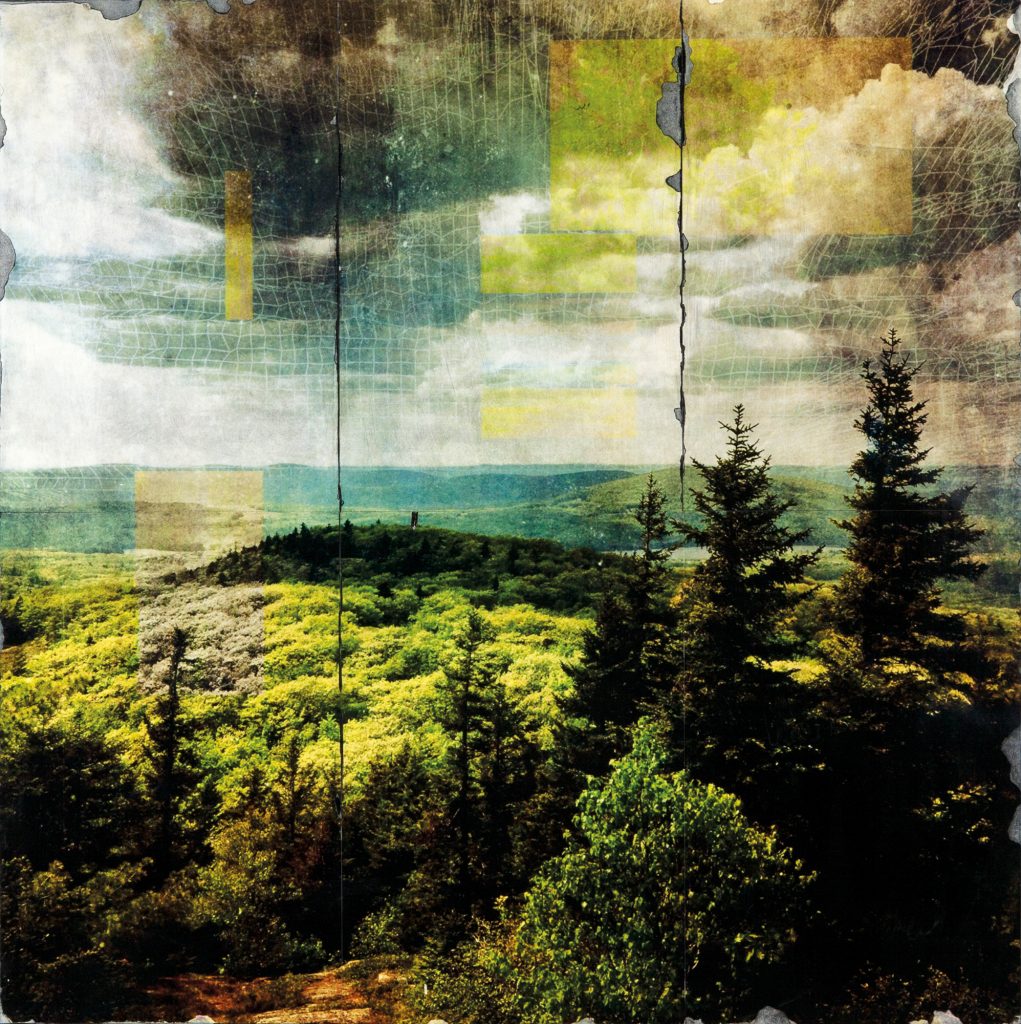Andrew Piccone: This has got to stop.

Andrew Piccone is a Brooklyn based artist and photographer. This past June, Piccone took a photo each day of the month for an annual project called This Has Got to Stop. The series captures portraits of friends, family members, and colleagues in and around New York City. Andrew Piccone is no stranger to us. Frontrunner Gallery showcased his work documenting the Occupy Wall Street protests in November 2011. I caught up with him to talk new work, process, and an interest in expanding our attention spans with his captivating double exposures.
Tell me about how you choose your subjects for this annual portrait project, and how it started? Are these friends, colleagues, strangers, or some combination?
The subjects in the project are all close friends and family who live in or around the city. When I first did it, in 2011, I set out to create a large-scale project that would have a collaborative element. In including my friends and family, and having them contribute input on the creative direction of the shoot it became less about me and more about a group of friends and family, and tracking their evolution over the years. It started as a one-off project that was successful and led me to want to do it again. It’s a cool experience, to get to hang out with a different person every day and document it. At the end of the month it’s crazy how much work I’ve created and how many people I’ve seen, caught up with, and collaborated with. It’s truly a great feeling. The first year went so well I kinda had no choice but to do it again, and after the second year I realized that this is something I would like to turn into my legacy. It is a multi-year project capturing the people closest to me as they grow up. The medium will continue and be the constant, but the subjects will grow and change and I think it’s going to be a really long, challenging piece.


It looks like you photograph the same group each year. Was this by design? How does this play a part in the spirit and process behind the images?
The group is not the same every year, although several people have been a part of it every year. As we grow up, people come in and out of our lives. People move away, we change jobs, we make new friends. While my core community in New York has stayed the same, I’ve been lucky to make some new friends and have had a few spots every June for new subjects. Ultimately, I hope that the project lasts like ten years or twenty years and some of my friends who are in couples have families to be in the project as well. It all comes back to the idea of this as a documentary project, a photojournalism project, a personal project.


What inspires your portraiture and the environments you or your subjects choose? How do you balance creating posed, environmental, and candid work for the June project?
When shooting people who are close to you there is an air of familiarity that puts the person at ease. I call the style I shoot in ‘candid portraiture’ – I ask the person to wear whatever they’re comfortable in and prefer shooting outdoors and using natural light. Ultimately the process is a collaboration of friendship – the subject feels comfortable and has their guard down which makes it easy for the photographer to capture great, natural shots capturing that person in their natural state. My favorite time of day to shoot is before dusk, when the sun goes down a little but its still bright enough to see, when everything is a little bit blue. June is the perfect month for this project because the days are the longest and I can meet someone after work and still have enough light to get somewhere and shoot and not feel rushed. It’s a great way to start the summer months.


Tell me about your process. Do you have a daily or weekly ritual for creating work?

I love to carry my camera around and look for things that aren’t typical, things that make me laugh. I got my first digital camera ten years ago, when I was in high school, and that was really at the very beginning of the photography in the internet era, before camera phones and Instagram and Facebook. To be able to carry a camera around in my pocket every day and shoot the weird and strange stuff I encountered, and then post it on my blog, (which was a live journal that I maintained until 2009). It was unlike anything i had known up to that point. I felt like I was on the cutting edge of something and I was intoxicated by it. My game has changed, and my craft has changed as well. I love that technology has put a camera in everyone’s pocket and photography is more accessible than ever. I now have a phone in my pocket, and when I see something in the course of my day that makes me laugh I can take a picture of it and put it on Instagram now I’ll bring my SLR around when I know I’ll encounter something worth shooting – a party, a weird spot in the city, an event, and see what I get. It’s been so long since I’ve taken my camera to work and walked around midtown on my lunchbreak, that was a huge thing for me when I first graduated from college and worked in the city, definitely how I got into street photography. There are so many amazing scenes and people on the streets. New York as a subject is pretty phenomenal. I’ve lately shifted into more mixed media work, multi exposure and collage. I’m fascinated with using crude techniques to manipulate images, doing them by hand feels freeing after relying on the camera or the computer as primary tools. I’m trying to explore a lot of ideas of personal identity and the decline of communication in the age of internet/smartphones. There’s a sense of identity in our number of twitter followers or how good our vacation photos look. Its alarming how much time we spend online and how that affects how we communicate offline.


Your series of multiple exposures are striking. Are these planned or the result of fine editing?
In my opinion the internet has shortened our attention spans a great deal. The idea of tabbed browsing is the perfect example of how technology has made us think we can absorb more than is possible at one time. I’ve tried to make art that is adapted for our shortened attention spans. A double exposed photo literally requires more time to look at, more time to absorb. These are the result of fine editing, looking for two images that would compliment each other to create one visually striking image.

Can you share an anecdote or a story from the Occupy Wall Street show at Frontrunner. It’s been a while now. I don’t think I told you but we were getting threats for a couple weeks from people who misinterpreted our intentions for putting on the show.
The Faces of Occupy Wall Street show at Frontrunner was an experience that I learned a lot from. I didn’t really do my homework and kind of fucked up in putting the show together, and the purpose of the show and my intentions got misconstrued and there was some backlash about my motives in that I was trying to profit off the protest. That was so far from the truth and was pretty shocking and upsetting to see it be turned into that. The opening was a great evening with some protestors joining and seeing for themselves that my intentions were in the right place, and the goal of the show was to create exposure for the protests, and put a face to some of the people behind it, not for my own gain. If I did it again, yeah I would have done it differently, and been smarter in the execution of it.
Who should Frontrunner profile next?
Charlie Rubin is making a lot of important work right now, he’s got a book coming out soon, he’d definitely be great.









Responses